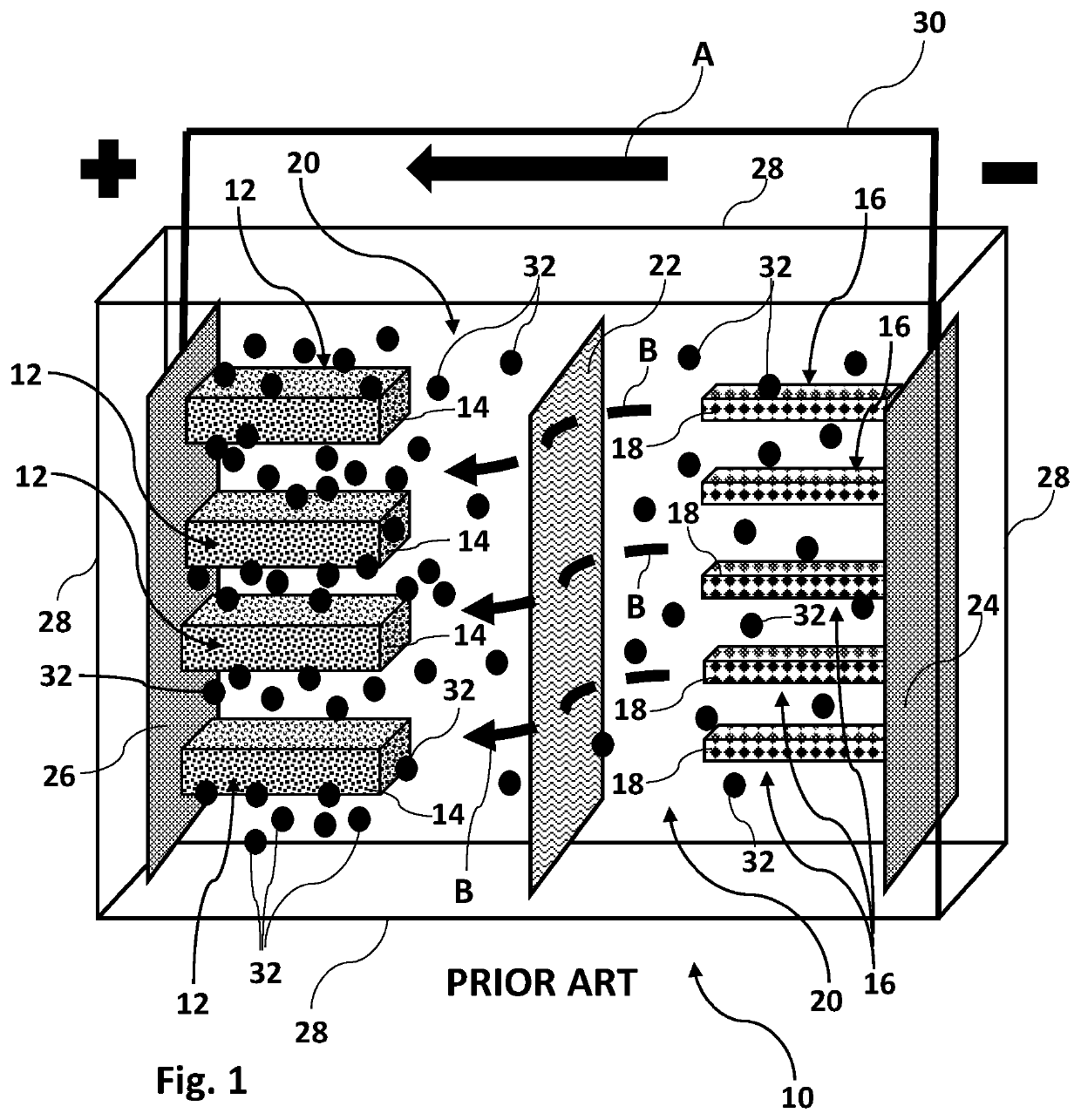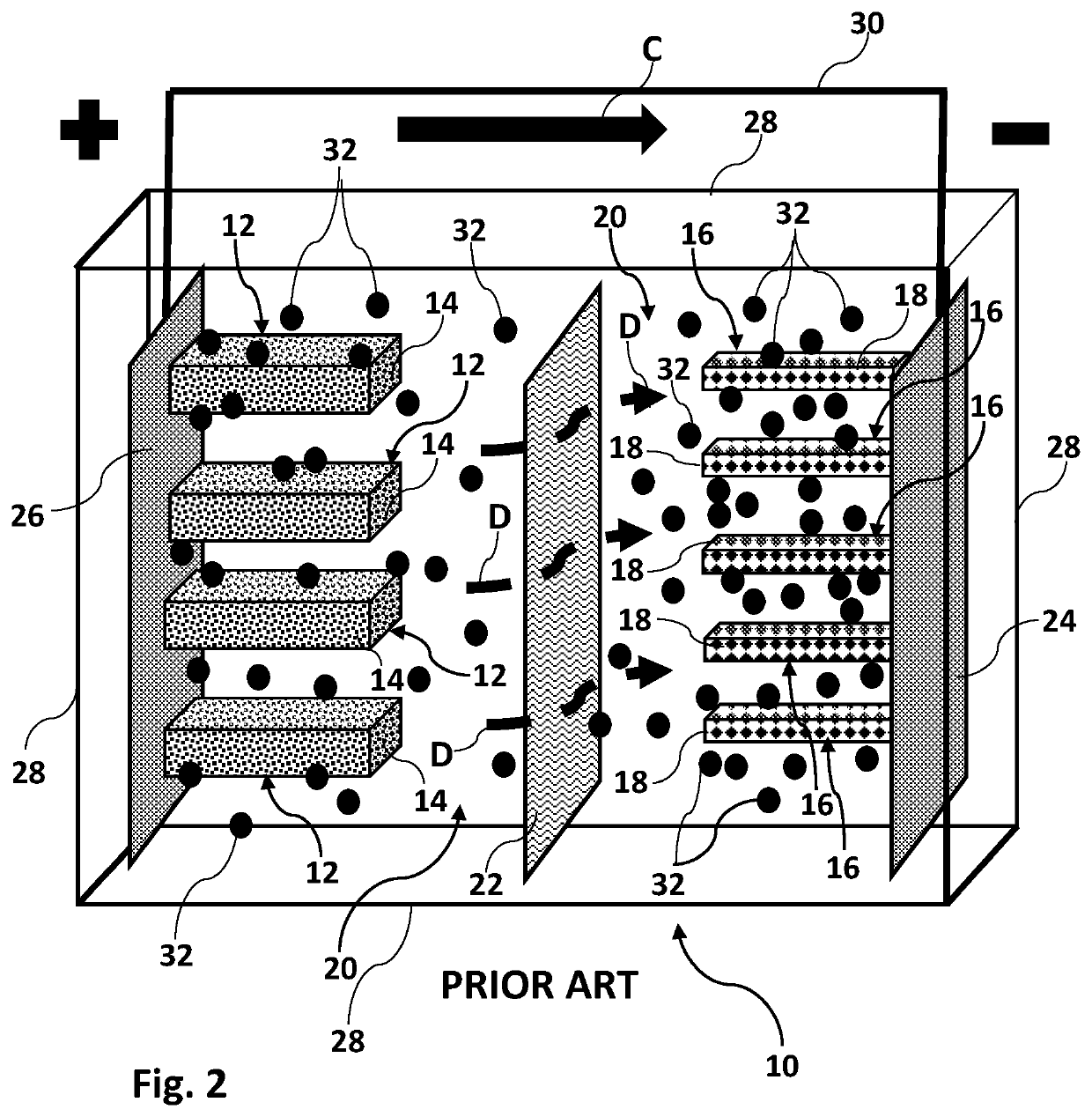Resistance Reduction in a Battery and Battery Materials
- Summary
- Abstract
- Description
- Claims
- Application Information
AI Technical Summary
Benefits of technology
Problems solved by technology
Method used
Image
Examples
examples
[0070]Following are a few representative examples that demonstrate the concepts and advancements disclosed herein:
Fiber Choice (Examples 1 Through 3)
[0071]Example #1—Nickel-coated carbon fiber in a cathode. A nickel-coated carbon fiber (7 microns diameter, with 40% nickel coating, or 0.25 micron thick, precision chopped to 0.50 mm) provided excellent conductivity in the cathode. Adding 2% by weight of the described fiber moved the through thickness resistance of a 100 microns film from 3.5 ohms (no fiber) down to 1.5 ohms (2% fiber). However, the lithium-ion coin cells made from these films would not cycle. It was discovered that the cell corroded at 3.75 volts, before reaching the 4.2 volts operating condition. This is because the half-cell potential of nickel and lithium is 3.75 volts. However, this did demonstrate that the conductivity could be greatly improved and suggested that the nickel-coated fiber should work in systems that remain below about three and a half volts (see an...
example 4
Cathodes (Example 4)
[0075]Example #4—Aluminum-coated fibers precision chopped to 0.5 mm. These coated fibers were dispersed into a standard cathode mix at 3% by weight (always reserving a portion of the mix for a control). This was repeated several times, the largest variable being a batch to batch or fiber type variation in the aluminum-coated fiber conductivity.
[0076]Films were extruded onto aluminum foil with a doctor blade, the height of the blade being adjusted to achieve a consistent film thickness and weight, depending on the desired thickness and the solvent-to-solids ratio of the mix. After drying, the uncalendared films were tested for volume resistivity per ASTM Method D2739. The table below reports several of these comparative batches.
Volume Volume resistivityresistivitycontrol modified Sampleohm-cmohm-cmImprovementA17506152.8×B22156873.2×C16174133.9×D21757902.8×
[0077]With sample set D, the samples were calendared and measured for composite Volume Resistivity (CVR) and i...
PUM
 Login to View More
Login to View More Abstract
Description
Claims
Application Information
 Login to View More
Login to View More - R&D
- Intellectual Property
- Life Sciences
- Materials
- Tech Scout
- Unparalleled Data Quality
- Higher Quality Content
- 60% Fewer Hallucinations
Browse by: Latest US Patents, China's latest patents, Technical Efficacy Thesaurus, Application Domain, Technology Topic, Popular Technical Reports.
© 2025 PatSnap. All rights reserved.Legal|Privacy policy|Modern Slavery Act Transparency Statement|Sitemap|About US| Contact US: help@patsnap.com



